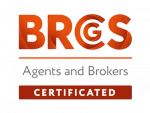Understanding the New Alcohol Duty Rates and Reliefs

Recent Posts
Categories
In a significant move to modernise and simplify alcohol duty rates and reliefs, the government has overhauled the existing system.
With the aim of eliminating complexity and outdated practices, these reforms will have far-reaching implications for individuals and businesses involved in the manufacture, distribution, sale, and consumption of alcoholic products. This article delves into the key changes and introduces the new duty reliefs, providing insight into the implications of this reform.
Simplifying the Alcohol Duty System
The Spring Budget of 2023 brought about confirmation of the government's commitment to revamp the alcohol duty system, marking a significant shift towards a more streamlined and efficient framework. The previous system, renowned for its complexity and outdated nature, has now been replaced by a simplified structure that aims to align with modern-day requirements and industry dynamics.
Key Highlights of the Reforms:
-
Introducing Two New Duty Reliefs: As part of the reform, two new duty reliefs have been introduced, catering to specific segments of the alcohol industry. These reliefs are designed to provide support and incentivise growth within these sectors, fostering innovation, and contributing to the overall development of the industry.
-
Transitional Arrangements for Wine Products: Recognising the unique considerations of wine products, the government has implemented transitional arrangements to facilitate a smooth transition for this segment. Detailed information regarding these arrangements can be found in the official government document linked below.
Effective Implementation Date:
The changes to the duty structure, along with the new reliefs, are set to take effect from 1st August 2023.
Implications for Stakeholders:
These reforms will impact various stakeholders within the alcohol industry, including manufacturers, distributors, retailers, and consumers. It is crucial for all involved parties to familiarise themselves with the updated regulations and guidelines to ensure compliance and capitalise on the benefits offered by the new system.
Accessing Detailed Information:
For in-depth insights into the comprehensive reform of alcohol duty rates and reliefs, it is recommended to refer to the official government publication titled "Reform of Alcohol Duty Rates and Reliefs." This document provides detailed information regarding the changes, transitional arrangements, and specific implications for different sectors within the industry. The publication can be accessed through the following link: https://www.gov.uk/government/publications/reform-of-the-alcohol-duty-system/reform-of-alcohol-duty-rates-and-reliefs
Conclusion:
The overhaul of alcohol duty rates and reliefs marks a significant step towards simplifying and modernising the current system. By streamlining regulations and introducing new duty reliefs, the government aims to create a more efficient and responsive framework that caters to the evolving needs of the industry. Stakeholders must stay informed about the reforms and take necessary steps to ensure compliance and leverage the opportunities presented by these changes.
Remember, it is essential to refer to official government sources and seek professional advice for the most accurate and up-to-date information regarding the reform of alcohol duty rates and reliefs.











